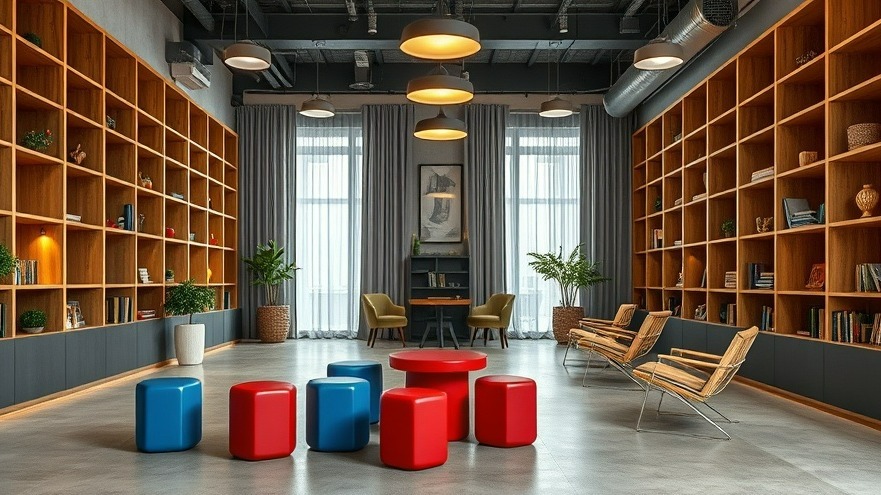
Transforming Chinatown into a Vibrant Work Hub
In the heart of New York, a project is underway to reimagine Chinatown as more than just a cultural landmark; it aims to be a thriving social and work hub for digital nomads. Spaced Agency's recent design initiative utilizes what they term the "iconographies of Chinatown" to create dynamic spaces that foster community, productivity, and creativity. This approach cleverly connects the rich history of Chinatown’s architecture and its evolving culture, creating an environment that is both inspirational and functional for remote workers.
The Value of Iconographies in Workspace Design
Iconography refers to the visual symbols and design elements that represent a place's identity. By incorporating these symbols, Spaced Agency is tapping into the cultural essence of Chinatown, making the space not just a place to work but a source of inspiration. For digital nomads, who often seek environments that stimulate creativity, this design strategy can enhance their work experience, leading to increased productivity and wellbeing.
Cultural Significance and Social Connection
For digital nomads, working in a culturally rich environment provides more than just aesthetic pleasure; it fosters social connections. Community spaces designed by Spaced Agency are intended to bring people together, encouraging collaboration and interaction. This aspect is especially vital as remote workers often miss out on social engagement typically found in traditional office settings. By creating gathering spots infused with cultural significance, the initiative addresses the need for both personal space and community interaction.
Practical Tips for Creating Your Ideal Remote Workspace
While Spaced Agency’s project showcases a larger trend, individual digital nomads can adopt several tips to craft their own efficiently designed workspaces:
Incorporate Cultural Elements: Enhance your workspace with art or decor from your local culture to create an inviting, aesthetically pleasing area.
Focus on Ergonomics: Ensure your desk and chair promote good posture – the right chair should support your back, and your desk should allow for relaxed arm position.
Encourage Movement: Designate spaces for standing work or stretching to maintain energy levels throughout the day.
Future Trends: The Shift Towards Hybrid Workspaces
The shift towards remote work is not just a temporary phase; trends indicate that hybrid workspaces are here to stay. As cities adapt, we might see more designs that incorporate communal workspaces within neighborhoods. This is a win-win for both urban development and the culture of remote work. Imagine stepping out of your apartment into a beautifully designed space that blends productivity with community, reminiscent of the charm of Chinatown.
Conclusion: Join the Movement
If you are a digital nomad looking to optimize your workspace, consider exploring designs inspired by local cultures. Engaging with these environments can significantly enhance your productivity and quality of life. Embrace the changes occurring in urban spaces like Chinatown, and take inspiration from them to create your own perfect workspace.
 Add Row
Add Row  Add
Add 




Write A Comment